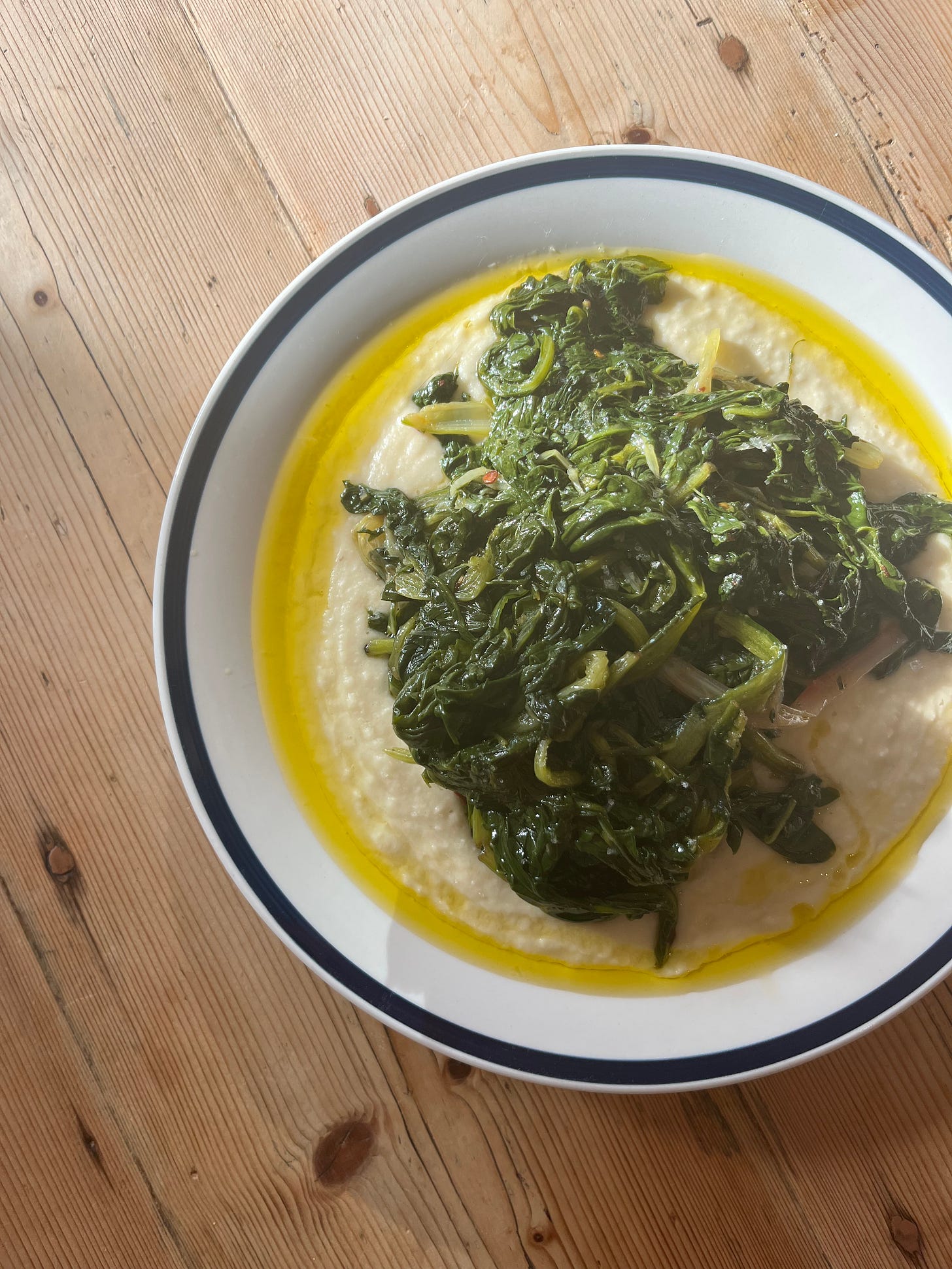Ómós Digest #189: The Italians Cook Greens Better.
A recipe for Fave e cicoria. Written by Cúán Greene.
Dear readers,
There’s a certain reverence centred around cucina povera - the style of Italian cuisine that’s focused on resourcefulness, using inexpensive local ingredients to achieve great flavour and satisfaction. If you have spent time in Puglia, you are undoubtedly familiar with the mother dish of this region: Fave e cicoria. Adorning every restaurant menu, this humble dish consists of wilted chicory leaves cooked in olive oil and set over a creamy fava bean purée. I’ve no doubt that this explanation has done little to tantalise your tastebuds, however, on our first night in the southern province, when one of the two “aunts” (as they are known at Le Zie Trattoria in Lecce) insisted that we have it, we listened. Paired with Bombette or ‘meat bombs’ - small flavourful meat rolls wrapped in prosciutto - it was obvious that Apulian dishes were not those found on Mario's pizzeria menu on Ranelagh mainstreet.
The fact of the matter is the Italians cook greens better than anyone. And they celebrate traditions with pride in a way we could learn from. Despite the simplicity of Fave e cicoria, which is akin to Ireland's Colcannon, it's an omnipresent staple, capable of causing an Italian unwavering levels of enthusiasm and nostalgic delight at the table. And rightly so. I believe a lot of this comes down to honour. Irrespective of how simple the fare is, meal times are respected, the white table cloth laid out, and dishes like Fave e cicoria become greater than the sum of their parts. Across English speaking countries, we’re told to cook vegetables of green pigmentation minimally, even shocking them in ice to halt death in its tracks. We eat more processed food than anyone, but nullify that by placing immeasurable importance on retaining as many nutrients as possible in our three florets of broccoli. In Italy, it's quite different. Vegetables, often with bitter characteristics (and subsequently, naturally higher in nutritional value), are cooked slowly, often twice - once in water then in olive oil. Known as ripassata, this technique allows the texture to soften and become more palatable. The common additions to the olive oil are garlic and chilli, causing the pan’s contents to meld, developing intensely harmonious flavours of unquantifiable depth from such humble beginnings.




